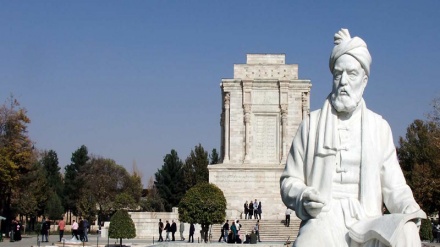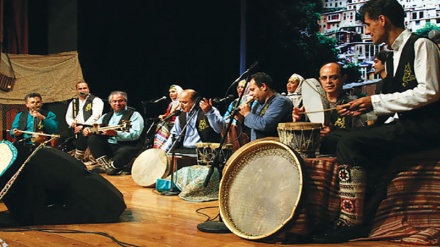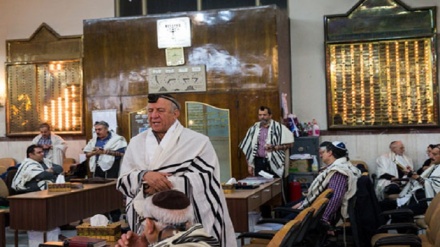Iran, land of various ethnicities (19)
This week’s episode will focus on wedding ceremonies in various regions of Iran.
The change of social life has impacted family life, too. The long process of marriage has become shorter and some of the customs have perished. However, people of different regions in Iran have maintained the core of these customs has remained in most areas. Marriage and wedding ceremony has been highly emphasized in the Iranian civilization. Choice of spouse creates calm and comfort and the family environment brings spiritual solace for wife and husband. With the coming of Islam to the vast land of Iran, various Iranian ethnic groups embraced this religion and, upon familiarization with this religion, they enriched their traditions in different fields, including marriage and weeding ceremonies. Islam kept good traditions and omitted superstitions and illogical ones.
As for Azarbaijan, the wedding feast is held traditionally. The bride is taken to the groom’s house in the evening. Earlier, she used to be taken by horse but now it has been replaced by car especially in urban areas. Prior to this custom, the dowry and gifts, which had been brought for the bride, are taken to the groom’s house. The bride is put on make-up and is accompanied with some of the elderly women of her relatives to the groom’s house. The bride’s father comes to the door of the house and prays for her hoping lucky days in her conjugal life. The groom’s family prepares dinner and many of the men and women on both sides are invited to the dinner. In old days, it was customary that the groom would hit the bride’s back gently with three apples and sprinkle sweets, bonbon and money on her head.
In Shiraz and Fars province the house of the bride and groom is adorned. Pottery vases of geranium flowers are placed round a pond. The floor of the yard is carpeted to prepare the house for guests.
Women who enter the house put their hands on their mouths and make special sounds called, ‘kel’ and ‘kel keshidan’. This custom is reciprocated by the women who are already in the house. Then an elderly from the groom’s side asks the permission of the bride’s parents to take the bride. Hence, they pass the bride beneath a copy of Qur’an. Upon entering the house, someone brings a small bowl of honey and the bride puts her finger in it and touches the door with her finger as she enters the house. Then a tray is brought is held in front of the bride with a copy of Qur’an in it and a bowl of water with a fresh leaf of a tree or flower in it. The bride kisses the Qur’an and passes beneath it. Others sprinkle bonbons on her head. Then the water is put in front of her and she crosses over it. She has to cross in a way that her foot hits the bowl making the water tip over.
The wedding ceremonies of Lor ethnicities are significant in Iran. The Lor people usually choose a girl and go to her house several times to observe her conduct especially with guests. Later on, some of the elderly from the relatives of the bride go to the girl’s house. This may take place several times. Then the girl’s family speak of their conditions for the marriage and the boy’s parents announce their satisfaction after a few days.
One of the customs among Lor people is Qiqaj. As a matter of fact Qiqaj is a kind of a marital art left from the past generations. Some of the male participants of the wedding ceremony test their archery and horsemanship in this way. They ride a horse and shoot arrows (gunshots) at the specified points simultaneously.
In Golestan province there are special wedding ceremonies. Among the ethnicities of this province, Turkmens enjoy a significant status in regard to wedding and pre-wedding ceremonies. It is the boy’s father who chooses a wife for his son and concludes the contracts for marriage. The Turkmens perform most of their ceremonies, including wedding ceremonies, with much fervour and exhilaration. They sing and play games during these ceremonies and recite the holy Qur’an as a sign of blessing for the new couple.
The people of Kurdistan hold wedding ceremonies with songs and games and rituals. Rituals like Pir Shaliar attract many lovers of traditional arts and customs to the region every year. But wedding ceremonies are very joyous and exciting. These ceremonies include soliciting for the girl, buying of bride’s clothes, engagement, Hanabandan (dyeing the bride’s and groom’s hands with henna), taking the bride to the bath, and the wedding night. Wedding ceremony usually takes 3-7 days at the groom’s house. At the wedding night an elderly woman, called ‘Sarsapi’ accompanies the bride to help her.
Wedding ceremony consists of 8 phases among the Baluch people.
- Gendunen: This means to propose to a girl.
- Hebarjani: In this ceremony in which the boy’s family officially announce that their son loves the girl and wants to marry her.
- Bar band mal: This is the ceremony in which the families of the girl and the boy sit together and determine the dowry and other items of the wedding ceremony.
- Jolbandi: In this phase the bride sits at home and nobody should see her.
- Hanadozoki: This is the unofficial and fake ceremony of dyeing the hands of the bride and groom with henna at the night before the official one.
- Hana Rastaki: This is the official and real ceremony of dyeing with henna.
- Sarapi (Sarab or Masshate): This ceremony is for preparing the bride and groom.
- Shab yekjayi: This is first night of the joint life of the bride and groom.
RM/ME


